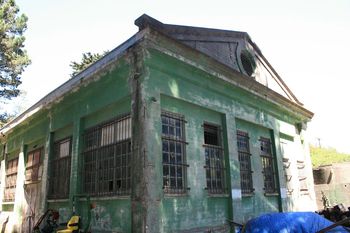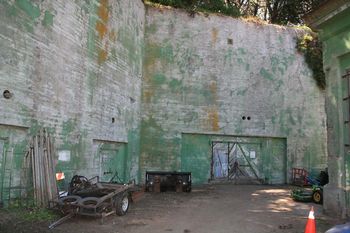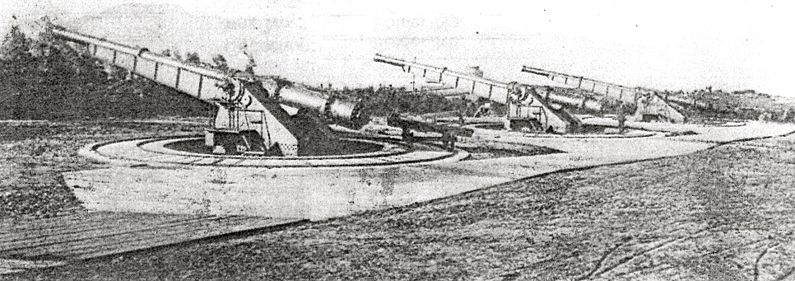Battery Dynamite (3)
|
Battery Dynamite (3) (1900-1904) - Battery Dynamite (3) was a reinforced concrete, Endicott Period 15 inch coastal pneumatic dynamite gun battery on Fort Winfield Scott (2), San Francisco County, California. The battery was named after the type of gun. Battery construction started in 1894, was completed in 1900 and transferred to the Coast Artillery for use 8 Jun 1900 at a cost of $ 127,137.30. Deactivated in 1904.
Endicott Period (1890-1910)Part of the Harbor Defense of San Francisco.
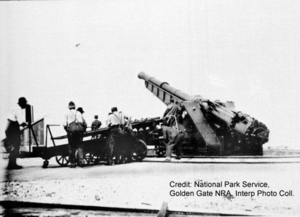 Originally built as an experimental Endicott Period concrete coastal gun battery with three 15" M1886 pneumatic dynamite guns mounted on M1886 Barbette carriages. Initial Battery construction consisted of three exposed 50' circular concrete pads for mounting the guns and carriages and a separate power house to provide compressed air to the guns. The guns were powered by compressed air that drove the explosive shells out of the gun tubes. The explosive used in the shells was dynamite. Dynamite shells could not be used in normal guns because the impact of the propellant firing would trigger the dynamite and the shells would explode while still in the gun tube. Compressed air drove the shells out of the gun tube at a lower velocity and with less impact. Because of the lower pressure and no explosive propellant, the gun tubes were very thin and actually required a cantilevered support to keep the gun tube rigid. This support beam can be seen in the photographs of the gun. The company description of the battery included: "The space required for the foundation and loading track was 50 feet in diameter. The gun was trained by electricity, and the firing and manipulation of the weapon were under the control of one man, the gunner, The gun could be traversed through a circle in 41 seconds, elevated in 8 seconds, and depressed in 8 seconds. According to tests, said the company, the gun under working pressure of 1,000 pounds could fire a full-caliber 15-inch projectile carrying 500 pounds a distance of 2,500 yards; a 10-inch subcaliber projectile carrying 200 pounds, 4,000 yards; and 8-inch subcaliber projectile carrying 100 pounds, 5,200 yards; and a 6-inch subcaliber projectile carrying 50 pounds, 5,800 yards." The cost of one gun was $60,000. The guns were test-fired from 4 Dec 1895 to 9 Dec 1895. 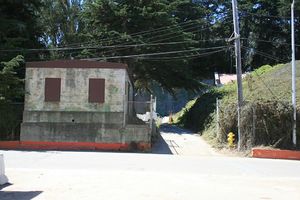 Since the guns were experimental, the contractor provided the guns, carriages and the emplacements as well as the considerable amount of machinery necessary to produce the highly compressed air. The original contractor, Pneumatic Dynamite Gun Company of New York, completed the work and satisfactorily tested the guns at the end of 1895. The range of the guns proved to be just over three miles. Deficiencies in the design of the battery left it, and the powerhouse, exposed to enemy fire and a program to rebuild the battery was begun in August 1898. High earthen traverses were built around the guns and the powerhouse.The magazines were reworked and expanded. The new battery was accepted for service on 8 Jun 1900 at an additional cost of $ 127,137. The guns were declared obsolete in 1901 and by the end of 1903, they had been removed from the harbor defense plan. In 1904 they were ordered salvaged. The Army objection to the guns seemed to center around the use of dynamite in the shells and the mechanical complexity of the battery. It was felt that the explosive force of the dynamite might explode underwater mines in the vicinity. The powerhouse remained operational until it was destroyed in the 1906 earthquake. The powerhouse traverses, built to protect it, caved in on the plant. A new powerhouse was later built in 1910 on the same site and provided power for the new Fort Winfield Scott (2) post.
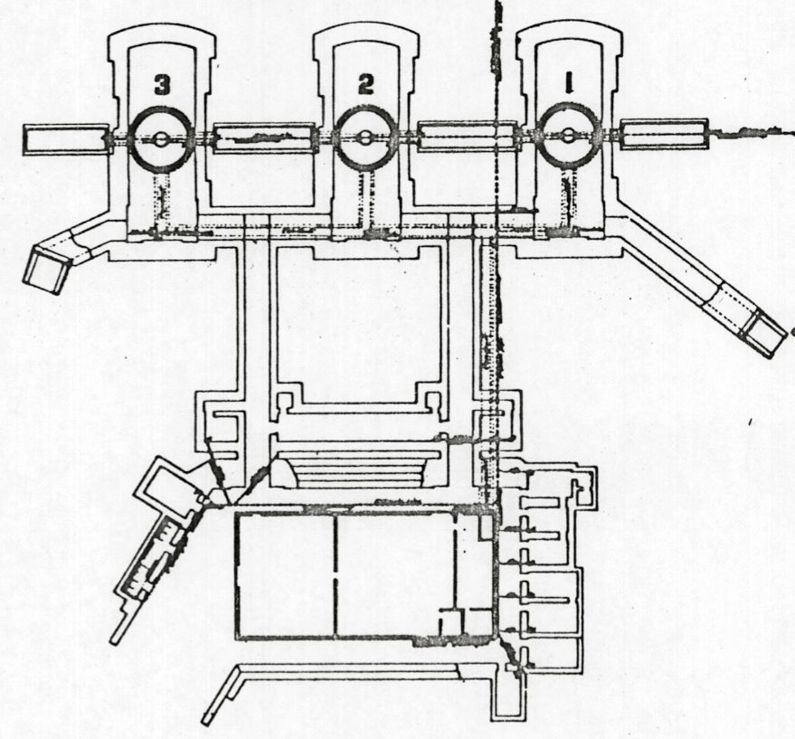
World War II (1941-1945)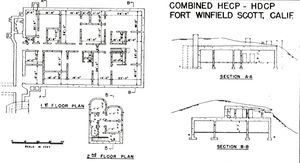 In 1911 a fire control station was constructed in emplacement #1 and, by 1941, this structure evolved into an HDCP/HECP for San Francisco Harbor known as "H" Station. As the war began, it was clear that the structure was too small and vulnerable to air attack. The fire control switchboard and the power plant associated with it were located in the corridors of the old Battery Dynamite which could easily be collapsed by an attack.
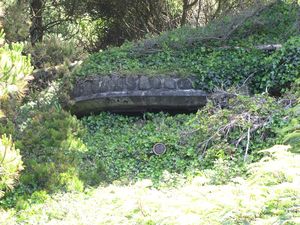 A new, two-story, HDCP/HECP was built during the war and accepted for service 8 Jan 1944. The upper story contained two concrete and steel pillbox observation stations, one for the Army and one for the Navy. This new structure was built to the left of the old station and in front of emplacement #2. The lower floor had sixteen rooms to house both the Army and Navy command functions. 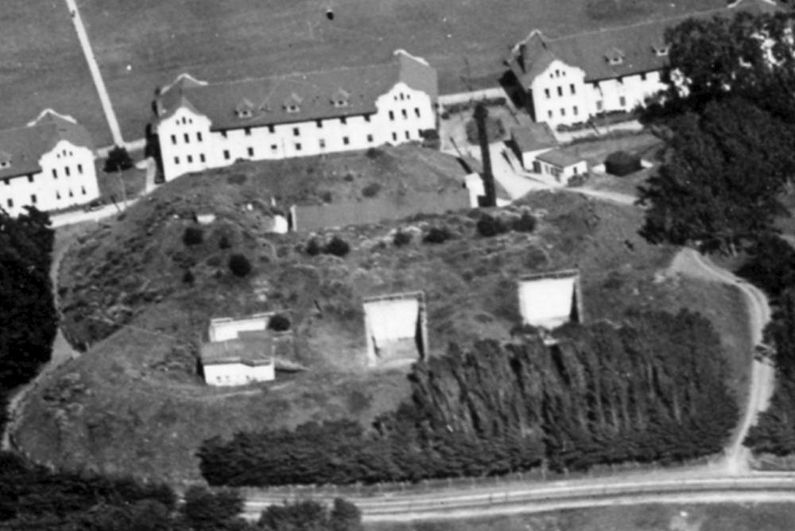
Current StatusPart of the Golden Gate Recreation Area (GGNRA) administered by the National Park Service. No period guns or mounts in place. This Facility is generally off limits to the public and only glimpses of the battery entrance can be seen from the street entrance. The 1910 power plant is visible from the street. The two HECP/HECP upper level observation stations can barely be seen from the Lincoln Ave. side.
Sources:
Links:
Visited: 27 Aug 2009 | ||||||||||||||||||||||||||||||||||||||||||||||||||||||||
